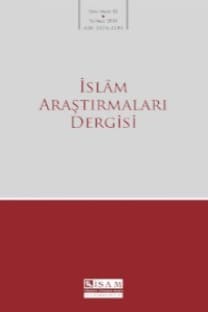İslâm İlimler Tarihinde Muhâkemât Geleneği: Tefsir Hâşiyeleri Merkezli Bir Deneme
e Tradition of Muhākamāt (Adjudications) in the History of Islamic Discip- lines: An Essay Based on Tafsīr Hāshiyahs
Although the origin of writing tafsīrs (commentaries) and hāshiyas (marginalias) goes back to the early period of Islam, it was not widespread before the 7th century hijra. e fact that this genre gained prevalence can be seen as the result of a num- ber of factors. e first of these was that as the main sources of Islamic knowledge had been written by this period, there was now a need to correctly understand and interpret them. e second factor was the emergence of summary texts from the Madrasah education as well as the tradition of discussing and explaining them. And the third factor was the need to gain continuity of thought through a main text. Another type of writing that can be considered to be part of this genre (tafsīrs and hāshiyas) is the study of muhākamāt (adjudications), which was the result of a search for solutions to eradicate disagreements between authors and commentators or between commentators and hāshiya writers. In these works, the authors arbitrate disagreements between scholars and try to determine whether their arguments are accurate or inaccurate. Starting most probably with Avicenna s al-Insāf, muhākamāt writings soon became a common genre in all other Islamic disciplines. is literature is important for the late Islamic literary tradition, allow- ing us to observe the dynamism and continuity of Islamic disciplines. is article aims to examine the muhākamāt tradition in the context of three important tafsīrs, al-Kashshāf by Zamakhsharī, Anwār al-Tanzīl by Baydāwī and al-Bahr al-Muhīt by Abū Hayyān.
___
- ISSN: 1301-3289
- Yayın Aralığı: Yılda 2 Sayı
- Başlangıç: 1997
- Yayıncı: TDV İslâm Araştırmaları Merkezi
